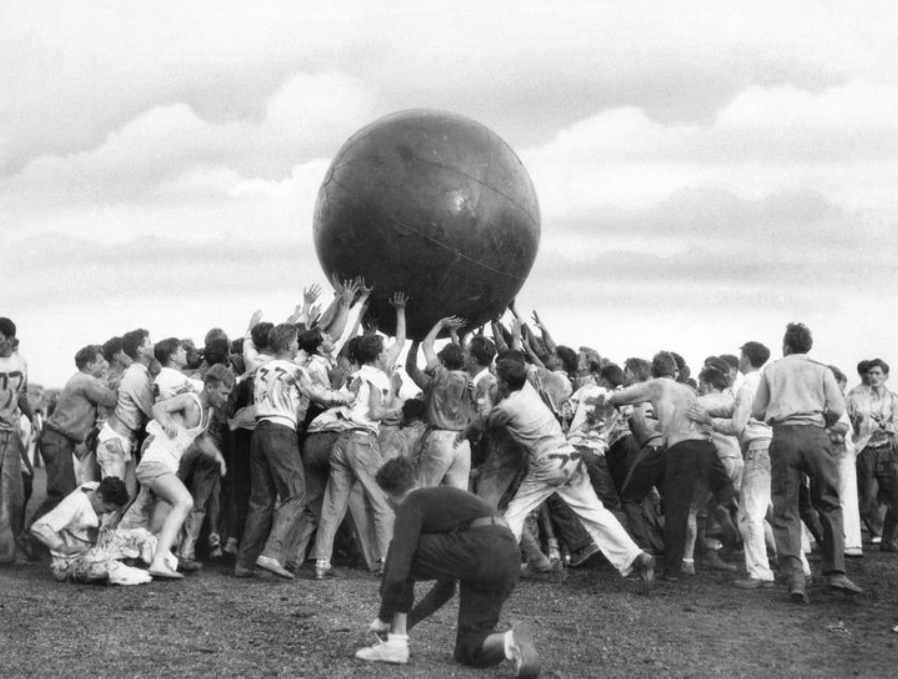Sport has always been a mirror to society — a reflection of our passions, values, and cultural tides. Yet for every modern-day global spectacle like football, basketball, or cricket, there are games that once commanded crowds, prestige, and even international significance — now relegated to footnotes in history books or dusty museum corners.
These forgotten sports didn’t merely entertain — they united nations, inspired generations, and in some cases, even sparked political tensions. This is a journey into the past, to rediscover the sports that once ruled the world.
Jeu de Paume – The King’s Court Game
Before tennis took Wimbledon by storm, there was Jeu de Paume, or “game of the palm.” Originating in France during the Middle Ages, it was originally played with bare hands before evolving to include gloves, paddles, and eventually rackets.
By the 17th century, Jeu de Paume had become the sport of kings — quite literally. French monarchs were fanatical about it, and the game was so popular that early tennis was simply known as “lawn tennis” to distinguish it from its indoor ancestor.
Today, Jeu de Paume survives as “real tennis,” but with only a handful of courts left in the UK and France, it’s a ghost of its former glory.
Pankration – Ancient Greece’s Brutal Favourite
A mix of boxing and wrestling, Pankration was the no-holds-barred event of the Ancient Olympic Games. It had only two rules: no eye-gouging and no biting. Everything else — including chokes and joint locks — was fair play.
It was arguably the most revered event in Ancient Greece, seen as the ultimate test of strength, endurance, and warrior skill. Champions were treated like demigods. Today, its spirit lives on in mixed martial arts, but the original sport — with its mythic status and brutal simplicity — is long gone.
Basque Pelota – The Fastest Ball Sport You’ve Never Seen
In parts of Spain and southern France, Basque Pelota is still played, but few remember that it once vied for Olympic inclusion and drew enormous audiences. Played with a ball hurled against a wall at speeds of over 200 km/h using a curved basket (in the “jai alai” variation), it’s considered one of the fastest ball games on Earth.
In the 1920s and 30s, it was the pride of Spanish-speaking nations and even had a brief showcase at the 1900 Olympics. But with the rise of football and other global sports, its international presence all but disappeared.

Pushball – Edwardian Chaos on a Field
Imagine a six-foot rubber ball, two teams of heavy-set men, and a simple objective: push the ball into the opposition’s goal. Welcome to Pushball, a sport popularised in the US and Britain in the early 20th century.
Often played at university sports days or as halftime entertainment, Pushball was part-spectacle, part-brawl. It was phased out over time, largely due to injury risks — and the increasing realisation that it wasn’t particularly practical.
A Snapshot of Once-Dominant Sports
| Sport | Peak Popularity | Region Dominated | Modern Legacy |
| Jeu de Paume | 16th–18th century | France, England | Real tennis, lawn tennis |
| Pankration | Ancient Olympics (648 BC) | Greece | MMA, wrestling disciplines |
| Basque Pelota | Early 20th century | Spain, Latin America | Regional play, Olympic demo |
| Pushball | 1890s–1920s | UK, USA | Rare exhibitions |
| Rackets | 1800s | UK elite schools | Squash’s precursor |
Rackets – The Forgotten Ancestor of Squash
Before squash became the middle-class fitness staple of the British sports club, there was Rackets — a brutal, high-speed game played in long enclosed courts with hard balls and heavier rackets. Originating in 18th-century debtors’ prisons (yes, really), it gained popularity in elite public schools like Eton and Harrow.
Today, only a few traditional schools and clubs keep the game alive, though its influence on squash is undeniable.
Why Sports Fade — And Why They Matter
Sports fall out of favour for many reasons — war, cultural change, the rise of television, or shifts in national identity. Some are too dangerous, others too expensive or slow to adapt. But in their time, these sports were more than just pastimes; they were symbols of power, pride, and identity.
Rediscovering them isn’t just about nostalgia — it’s a reminder that sport, like society, is always evolving. And as we look forward to the next big trend (drone racing? e-sports in the Olympics?), it’s worth remembering what once was.
While today’s dominant sports have carved out global empires, they too might one day face decline. The next forgotten sport could be one we now take for granted. But the beauty of sporting history is that nothing truly disappears — it just waits to be rediscovered.
So next time you pick up a tennis racket or watch an MMA fight, spare a thought for Jeu de Paume or Pankration. In many ways, they walked — or wrestled — so today’s icons could run.

